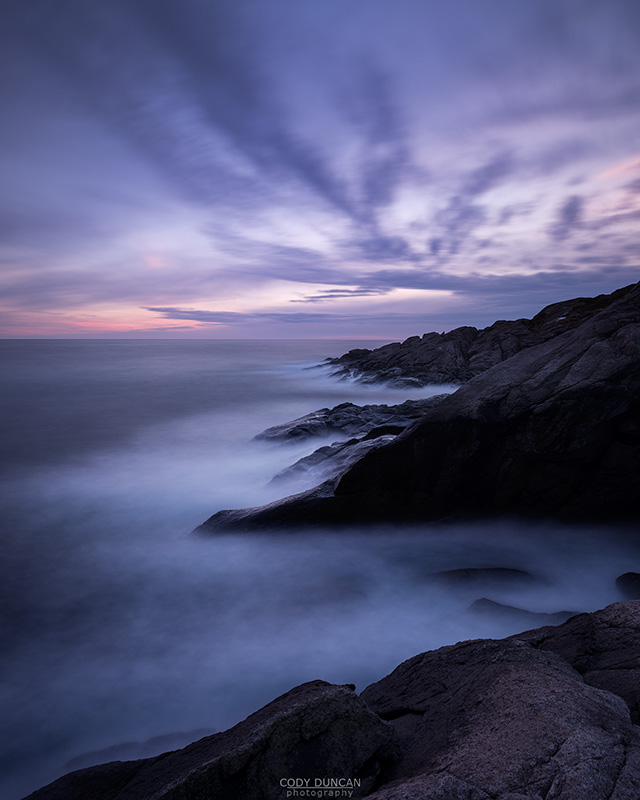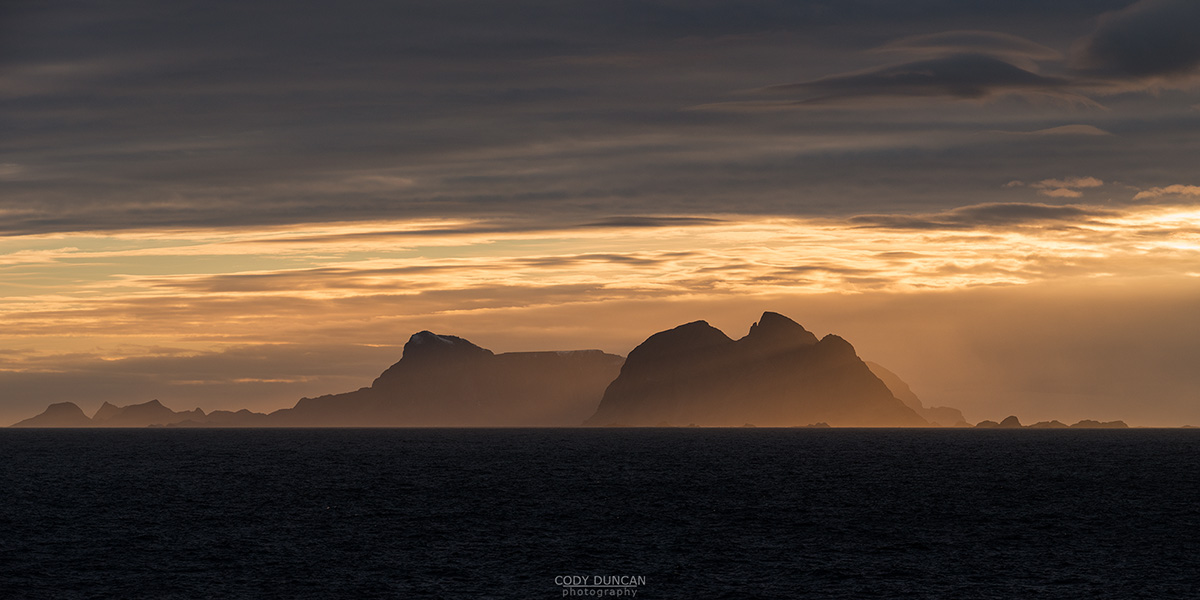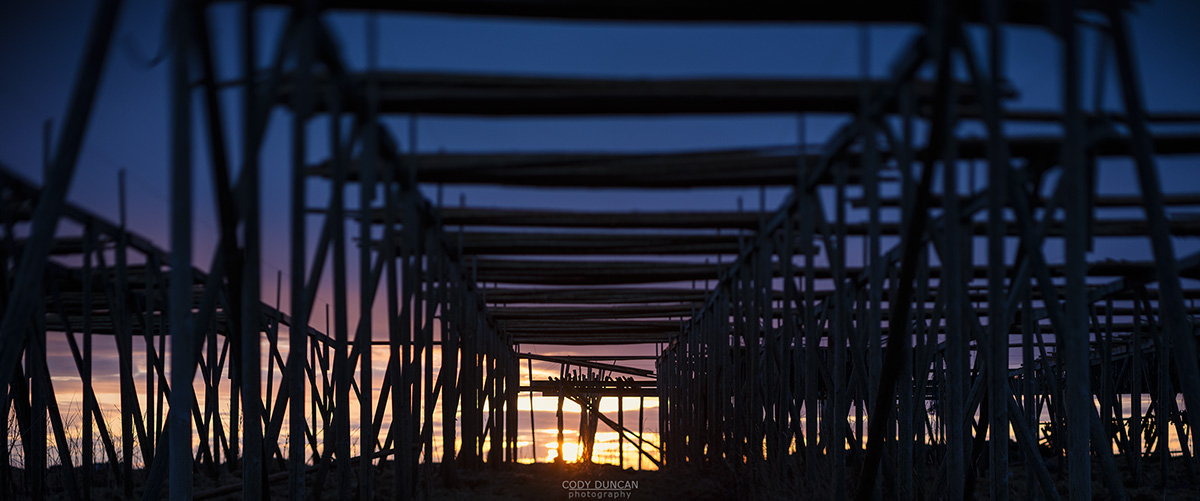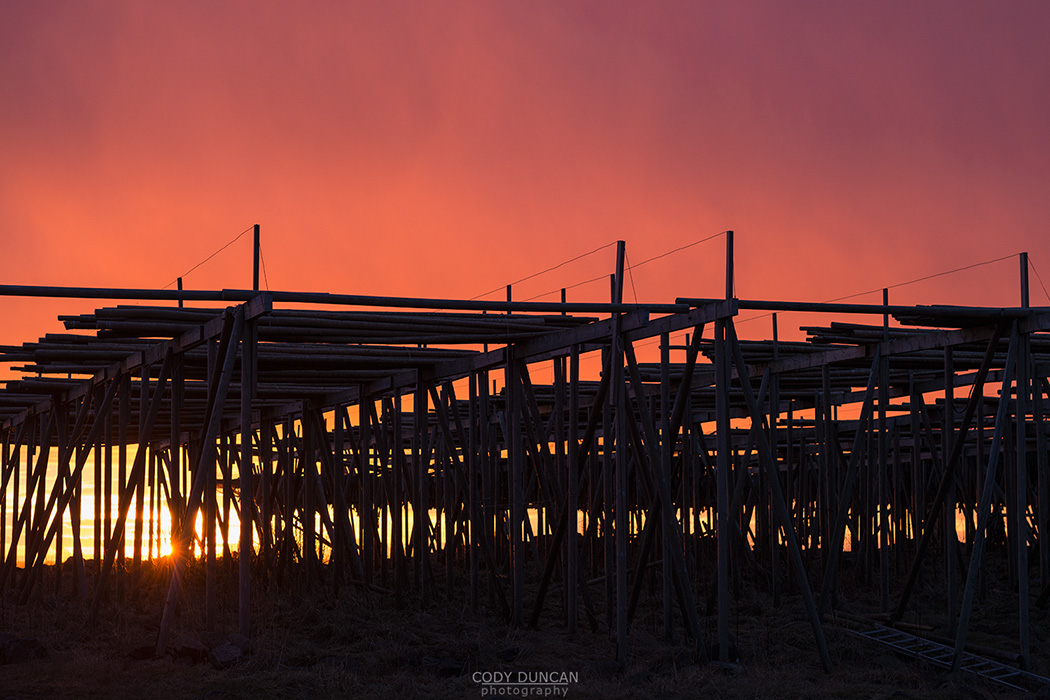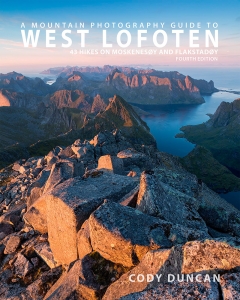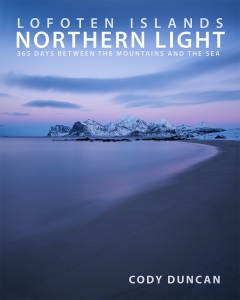Photo: Evening light over Kvalvika beach from Ryten, Moskenesøy, Lofoten Islands, Noway. August 30, 2013. 19:53
I think the view from Ryten down to Kvalvika beach is perhaps one of the most spectacular scenes on Lofoten. I know Reinebringen gets a little more press, mainly because it’s easier to get to, thus climbed more often, but the view from Ryten definitely holds its own in my opinion.
Having been up the mountain a few times now, I’m always left with the dilemma of how early to begin hiking. I like to catch the afternoon/evening (depending on time of year) sun shining into Kvalvika bay (whale bay bay for you Norwegians 😉 ), yet I also like to try and remain on the summit for sunset. Unfortunately, these events can be rather far apart, and usually involve a long, cold wait between the two.
This afternoon was one of those cold, windy days. While the photo and light might look somewhat peaceful, a harsh, bitter wind was raking across the summit. My partner is sitting down because it was quite possible for her to safely stand! I could barely focus the image as my eyes were watering up so much every time I looked through the view finder. And it’s a near miracle I managed any sharp images.
Despite the wind, the light was so nice. I wanted to remain until sunset, but it was obvious I wouldn’t get any sharp images once I needed longer shutter speeds as my tripod blew over a few times (without my camera) which is never a good sign…
Camera Info:
Nikon D800
Nikon 24-70mm f/2,8
26mm
ISO 250
f 7.1
1/200 second
WB Daylight




